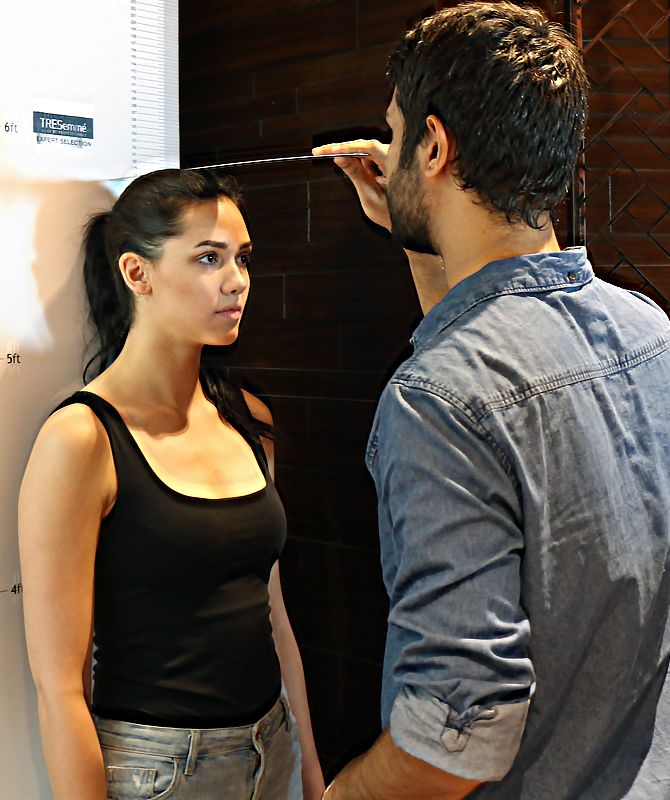 | « Back to article | Print this article |
You may no longer have to rely on international size charts.

Photograph: Rajesh Karkera/Rediff.com
Seeking to come up with a standardised India size chart for ready-made garments, the National Institute of Fashion Technology (NIFT) will soon start a national sizing survey that will sample 25,000 people using high-tech whole body scanners.
The project has been approved by the Centre and will entail measuring of 25,000 male and female Indians in six cities in six regions of the country: Kolkata, Mumbai, New Delhi, Hyderabad, Bengaluru and Shillong, according to the Textiles Ministry.
NIFT Director General Sarada Muraleedharan told reporters here that the survey will cost nearly Rs 30 crore and the project would be conducted over a period of 2-3 years.
Once a uniform India size is arrived at, even foreign brands in India would also carry it, Rajesh Shah, the chairman of the Board of Governors of the NIFT said.
'Besides, our diaspora can then also order any wear based on that standard size.'
NIFT is under administrative control of the Textiles Ministry.
The survey entails measuring statistically relevant sample size pan country using human safe technology of 3D whole body scanner, a non-contact method of taking body measurements and analysing the collected data to create size charts.
'Indian apparel industry uses size charts which are tweaked versions of size charts of other countries so returns of the garments are in the range of 20 to 40 per cent and is increasing with the growth of e-commerce and the main reason for returns are poor garment fit,' the Textiles Ministry said in a statement.
Using 3D whole body scanners, computers will extract hundreds of measurements from a scan.
The anthropometric data collected from the sample population in the age group 15-65 years to create a database will result in a standardised size chart which is representative of the Indian population and can be adopted by the apparel industry, it said.
The data created as part of this project will be confidential and secure, the statement highlighted.
Talking about the need of the survey, the ministry said a large percentage of shoppers face difficulty in finding clothes that fit perfectly according to their body measurements.
The reason is differences in anthropometric built of people in different geographical regions across the country.
In India, either the US or the UK system of small, medium, large and extra large has been used, and people then go for fitting accordingly, the NIFT director general said.
After the uniform size chart is available, whole country will have a 'standard reference point' for ready-to-wear industry, Muraleedharan said.
'That means, all India brands will have the same size for a person.'
Till date 14 countries have successfully completed national sizing surveys: the US, Canada, Mexico, the UK, France, Spain, Germany, Korea, China and Australia.
The findings of the study will impact various other sectors like automotive, aerospace, fitness and sport, art and computer gaming where insights from this data can produce ergonomically designed products which are suited for the Indian population.
Providing well fitting garments in the absence of standardized size chart is proving to be a big challenge for the domestic textile and apparel industry which is projected to reach USD 123 billion by 2021 and holds 5th position in apparel imports, the Textiles Ministry said.
'The NIFT had been toying with this idea since 2006. But you can say the stars finally aligned, and with the support of the Ministry of Textiles, we are ready for this exercise.
'Of the Rs 30 crore, the ministry will give Rs 21 crore and the NIFT will pitch in with about Rs 9 crore,' Muraleedharan said.